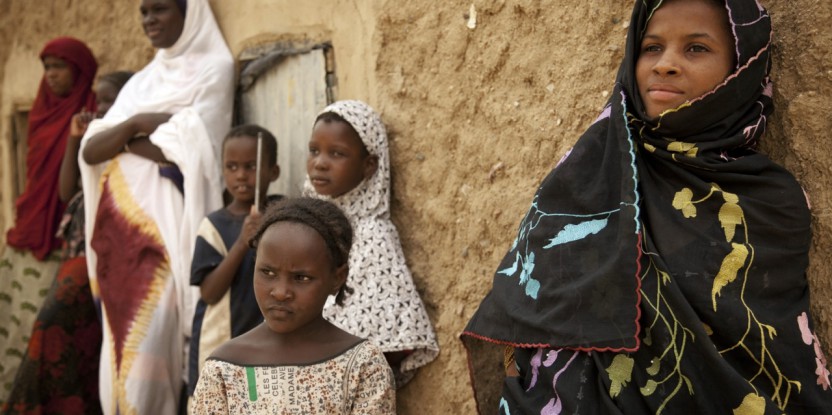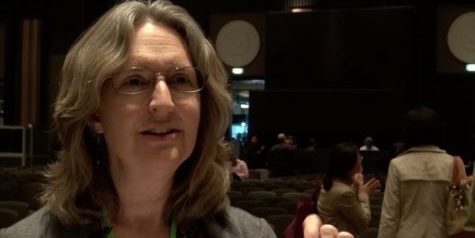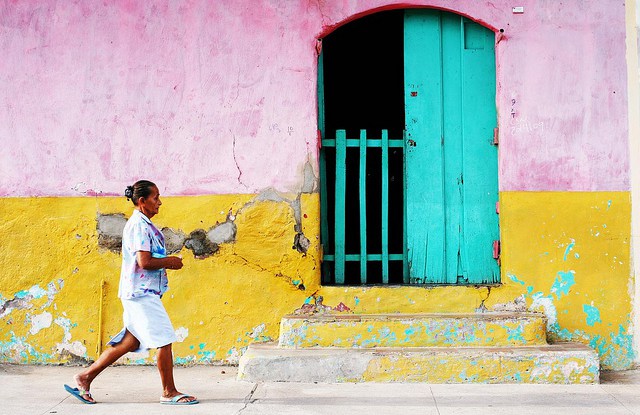LIMA, Peru—Scientists and indigenous leaders at a gender session at the Global Landscapes Forum—on the sidelines of the annual UNFCCC climate change conference in Lima, Peru—stressed the need to consider how climate change might affect men and women differently, and to incorporate gender into studies of both mitigation and adaptation.
“Power relations determine experiences, education and opportunities, and that means the impacts of climate change will be unevenly distributed,” Eleanor Blomstrom from the Women’s Environment and Development Organization (WEDO) told the audience.
Gendered power structures have impacts in rural villages—and in the international negotiations.
Even within the UNFCCC itself, she said, there is a strong gender imbalance. On the board of the Green Climate Fund, for instance, there are 21 men and three women; on all the other UNFCCC boards and bodies men also significantly outnumber women.
“We need more information—how climate change affects women, how are women blocked from making decisions, and where does women’s leadership come in this kind of decision making,” Blomstrom said.
Claudia Ringler, Deputy Director of the Environment and Production Technology Division at the International Food Policy Research Institute (IFPRI) shared new research on women smallholder farmers and their ability to adapt to climate change.
GENDERING ADAPTATION
The IFPRI research examined the gender-differentiated impacts of climate change and the scope for community-based adaptation in Bangladesh, Ethiopia, Kenya, and Mali, Ringler said.
“There was a clear gender gap in both tangible and intangible assets,” she said.
“We found that men are more directly adversely affected by climate change, but women’s assets, often smaller and more liquid—such as jewelry—are more easily disposed of in climactic shock.”
We need to proactively build women’s education to increase climate change resilience and develop their full potential
They found that women were least equipped to adapt their farming practices to climate change.
“Women have less access to agricultural technology that would help them adapt to climate change,” she said.
“In Mali, men were able to make up for production shortfalls because of access to irrigation—women did not have access and could not make up the shortfall.”
“Men were able to use the best technology they had; women used the hoe.”
There were also large knowledge gaps between men and women, she said, with men in Mali more likely to receive information on climate change adaptation strategies through social networks.
“Climate change information is increasingly complex, and if women do not have formal channels to get information, they won’t perceive there’s a problem.”
In Kenya, they found women were less likely to know about climate smart agriculture techniques—however those that did know about them were just as likely as men to adopt the practices.
“That means we need to target climate information more directly to women,” Ringler said.
“We need to proactively build women’s education to increase climate change resilience and develop their full potential.”
GENDERING MITIGATION
Gender issues have received even less attention when it comes to climate change mitigation, the panel said.
Ten UNFCCC decisions on adaptation have addressed gender; just three on mitigation have.
Yet when discussing REDD+—a scheme aiming to mitigate climate change by reducing emissions from deforestation and forest degradation—it’s important that scientists and those implementing initiatives consider gender, says Anne Larson, a Principal Scientist at the Center for International Forestry Research (CIFOR).
“Gender is relevant because any policies that start changing your rules about land and forest use are as likely to affect women as they are to affect men—and depending on the division of labor, they may be affected differently,” she said.
“When you’re talking about the actions and strategies being done to try to change forest use, you need to think about what are you asking people to do.”
“Are you asking them to stop shifting cultivation, are you asking them to produce in smaller areas? And if so, who are you affecting? Are the activities done by women, or by men? These are some of the gendered questions that need to be asked.”
That’s what Larson and other CIFOR scientists have been doing.
If we don’t take a gendered approach, we’re likely to do more harm than good for women
CIFOR’s Global Comparative Study on REDD+ has been examining gender issues as part of its assessment of 23 REDD+ pilot initiatives in six countries across the tropics.
They conducted women-only focus groups as well as mixed village consultations, where men number around 66 percent.
Findings from 20 early REDD+ projects in 77 villages show that when responses are compared between mixed and women’s focus groups, the women’s groups are significantly less knowledgeable about REDD+ project interventions.
Forty-one percent in the women’s group had a basic understanding of REDD+, while 67 percent did in the mixed group.
“It was somewhat surprising to find this difference across the board,” Larson said.
Even in communities where women played an active role—where they held leadership positions and felt like they had an influence on village decisions—they still knew less about REDD+ than the men.
Likewise, in communities where it appeared that men and women’s use of the forest was more or less equal, or even where women used the forest more than men: “You still didn’t see a difference—there was still this big gap in women’s knowledge about REDD+,” Larson said.
“These are women you would expect to have a vested interest in forests, and yet you don’t see them being equally informed as the men in their own communities,” she said. “Only in communities where women played an important role in forest rule-making did we see this gap narrow.”
This means that interventions in communities, like REDD+, that affect how people can use forest resources, need to take these disparities seriously.
“If we don’t take a gendered approach, we’re likely to do more harm than good for women,” Larson said.
“In the REDD+ context, if the status quo is inequitable then interventions that don’t understand and address those inequities from the beginning are doomed to perpetuate them.”
For more information on this topic, please contact Anne Larson at a.larson@cgiar.org.
We want you to share Forests News content, which is licensed under Creative Commons Attribution-NonCommercial-ShareAlike 4.0 International (CC BY-NC-SA 4.0). This means you are free to redistribute our material for non-commercial purposes. All we ask is that you give Forests News appropriate credit and link to the original Forests News content, indicate if changes were made, and distribute your contributions under the same Creative Commons license. You must notify Forests News if you repost, reprint or reuse our materials by contacting forestsnews@cifor-icraf.org.



